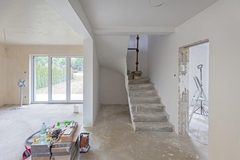
Innovations in technology have transformed many industries, but when it comes to the restoration of homes and properties after damage, are traditional methods still holding their ground? This question echoes the uncertainties faced by homeowners witnessing the tangible scars left by water, fire, and mold damage. As leaders in the restoration sector, firms like RestoreMore are at the crossroads of embracing cutting-edge technologies while respecting tried-and-true techniques. This balance is crucial, not only to maintain market leadership but also to offer services that are both effective and accessible.
Restoration is crucial in returning properties to their pre-damage state. The industry is continuously evolving, with advancements aiming to improve efficiency, reduce costs, and enhance outcomes. This blog seeks to explore whether traditional methods still maintain their relevance or if modern techniques are reshaping the industry's landscape. By examining both perspectives, this article will arm property owners with insights enabling them to make informed decisions about restoring their homes.
Not only will we delve into current trends, but we'll also present real-world examples from Racine, WI, illustrating the transformative impact modern restoration solutions have on communities. With actionable advice and expert opinions, this post will guide you through the maze of restoration choices.
Traditional Restoration Methods: The Backbone of Reliability
The Time-Tested Techniques
Traditional restoration methods like manual moisture removal, conventional cleaners for fire damage, and basic scrubbing techniques for mold have been in use for decades. Their longevity attests to their reliability and effectiveness. These methods have withstood the test of time because they are simple, cost-effective, and require minimal specialized equipment, making them accessible to smaller service providers.
Real-World Example: Racine's Historic Properties
In Racine, WI, several historic properties still rely on traditional restoration methods for their simplicity and economic value. For instance, the Racine Historic Preservation Committee successfully used conventional restoration techniques to restore the Franklin Hall, a key historical site under threat by water damage. Manual drying and targeted cleaning preserved the architectural elegance, underscoring the continued relevance of these methods.
The Challenges
However, traditional methods are not without their limitations. They are often labor-intensive and less efficient, especially in large-scale damages. The time required for restoration can lead to prolonged displacement for homeowners, which is a significant disadvantage.
The Modern Revolution in Restoration: Technology at the Forefront
Emerging Technologies
With technology seeping into every industry inch, it's no surprise that restoration processes are evolving. Techniques such as infrared moisture detection, ozone treatments for fire-related smoke damage, and advanced air scrubbers for mold are revolutionizing how damage restoration is approached. These methods promise faster, more precise, and often more affordable solutions compared to their traditional counterparts.
The Benefits
Modern technologies often mean quicker restoration times, reducing homeowner displacement. Moreover, their precision can prevent unnecessary demolition, preserving property integrity. Advanced methods also tap into eco-friendlier solutions, appealing to environmentally conscious clients.
Striking a Balance: When to Use What
The Right Tool for the Right Job
So, does this mean we abandon traditional methods entirely? Not quite. Each approach has its place and purpose. For smaller jobs or when budget-friendliness is key, traditional methods can suffice. However, larger, more complex situations may necessitate the precision and efficiency of modern techniques.
Actionable Advice
- Assess the Damage: Understand the extent and nature of the damage. Is it something a traditional method can handle, or does it require the sophistication of modern techniques?
- Consider Time Sensitivity: If rapid restoration is necessary, contemporary methods might offer better solutions.
- Evaluate Budget Constraints: Align restoration choices with budget considerations to ensure optimal results without financial strain.
Conclusion: Making Informed Choices
In conclusion, both traditional and modern restoration methods have their roles within the industry. The key lies in choosing the right technique depending on the specific circumstances of the damage. At RestoreMore, we blend these approaches, ensuring each project receives a custom solution that best fits its needs. As industry leaders, our commitment remains steadfast in providing quality, reliability, and modern advancement in every restoration effort.
To understand which solution suits your needs best, consider visiting our services page or reach out directly for a personalized consultation. With RestoreMore, your property is not just restored; it's transformed.